What are Sales Objections?

Sales objections are concerns or hesitations raised by potential customers during the sales process. These objections can range from doubts about the product or service to pricing issues or timing concerns.
Understanding and effectively addressing these objections is crucial for successful sales outcomes. Objections can arise at various stages of the buying process, and understanding these stages is essential for addressing objections effectively.
Sales objections are normal and often indicate that the prospect is engaged but needs more information or reassurance before making a purchase decision.
For instance, a software salesperson might demonstrate how their product saves time and money through a case study where a similar company increased efficiency by 30%.
What are the 10 Types of Sales Objections

1. Price Objections
Price objections are very common in sales. They happen when a customer feels that the product or service costs too much. To overcome this, explain the value of what you’re selling.
- Why: Customers want to know they’re getting good value.
- How: Show benefits that justify the price, like savings over time or superior features.
- Example: "This washing machine saves you 50% on water bills."
2. Product/Service Fit Objections
Sometimes, customers don’t think the product or service fits their needs. They might say, "This isn’t right for me."
- Why: Customers need to see how the product fits their specific situation.
- How: Ask questions to understand their needs better.
- Example: "Our software can be customized to fit your business processes."
3. Timing Objections
Timing objections occur when a customer thinks it's not the right time to buy.
- Why: Customers might be unsure or hesitant.
- How: Create urgency by highlighting the benefits of acting now.
- Example: "We have a limited-time discount that ends soon."
4. Budget Objections
Budget objections arise when a customer says they don’t have enough money.
- Why: Affordability is a big concern.
- How: Offer flexible payment plans or demonstrate long-term savings.
- Example: "We offer a payment plan that can fit your budget."
5. Authority Objections
Authority objections happen when the right person that you’re talking to isn’t the decision maker.
- Why: The final decision might be someone else’s.
- How: Provide materials for them to share or ask to speak to the decision maker directly.
- Example: "Can we schedule a meeting with your boss to discuss this further?"
6. Need Objections
Need objections occur when a prospect thinks a customer doesn’t see the need for the product or service.
- Why: They don’t recognize the problem it solves.
- How: Show how it addresses a specific need.
- Example: "Regular exercise can improve your health, and our gym memberships make it easy."
7. Trust Objections
Trust objections arise when a customer doesn’t trust you or your company.
- Why: Trust is crucial for sales.
- How: Provide testimonials, case studies, or guarantees.
- Example: "Here are some reviews from our satisfied customers."
8. Urgency Objections
Urgency objections happen when a customer doesn’t feel the need to act quickly.
- Why: There’s no immediate pressure to buy.
- How: Explain the benefits of acting now.
- Example: "By waiting, you might miss out on our special offer."
9. Competition Objections
Competition objections occur when a customer prefers a competitor’s product or service.
- Why: They might see more value in the competitor.
- How: Highlight your unique features and benefits.
- Example: "Our product offers better customer support and a longer warranty."
10. Quality Objections
Quality objections arise when a customer doubts the quality of your product or service.
- Why: Customers want to ensure they’re buying something reliable.
- How: Provide proof of quality, such as certifications or awards.
- Example: "Our product has been certified for its high quality and durability."
10 Strategies to Overcome Objections in Sales

1. Active Listening
Active listening is key to overcoming objections in sales. It shows that you care about what the prospect is saying and helps you understand their concerns better.
Active listening means paying full attention to the speaker. It involves not interrupting, making eye contact, and responding thoughtfully.
Why is it Important?
- Builds Trust: When you listen carefully, prospects feel valued.
- Uncovers Concerns: It helps identify the real reasons behind objections.
How to Practice Active Listening:
- Focus on the Speaker: Avoid distractions and listen closely.
- Ask Clarifying Questions: This shows you are engaged and helps clarify any doubts.
- Summarize and Reflect: Repeat back what you heard to ensure understanding.
Example: Imagine a prospect says, "I'm not sure your product is right for my company." Instead of jumping to defend your product, you could say, "I understand your concern. Can you tell me more about what you’re looking for in a product?" This approach can reveal specific issues you can address.
2. Empathize with the Prospect's concerns
Empathy is crucial in sales. When you understand and acknowledge your prospect's concerns, you build trust and create a stronger connection.
Empathy means putting yourself in your prospect's shoes and understanding their feelings. For example, if a prospect says, "I'm worried about the cost," you can respond, "I completely understand why that price is a major concern for you."
Why Is Empathy Important?
Empathy helps build trust. Prospects are more likely to trust and buy from you if they feel understood. According to Salesforce, 79% of customers trust companies that understand their needs.
How to Show Empathy
Here are some ways to show empathy effectively:
- Listen Actively: Pay close attention to what the prospect is saying. Use nods and eye contact to show you are engaged.
- Acknowledge Concerns: Repeat back what the prospect says to show you understand. For instance, "You mentioned the budget is tight. Let's see how we can work within it."
- Ask Open-Ended Questions: Encourage the prospect to share more by asking, "Can you tell me more about your needs?"
- Provide Solutions: Show that you want to help. If a prospect has a price objection, discuss available payment plans or discounts.
3. Provide Social Proof
Why is it Important?
Social proof is crucial in sales because it improves trust and credibility with potential customers. It demonstrates that others have successfully used your product or service, alleviating doubts and encouraging prospects to move forward in their buying journey.
How to Provide Social Proof:
- Use Case Studies and Testimonials: Share detailed stories of satisfied customers who initially had objections but were won over by your product's benefits. Highlight specific challenges they faced and how your solution helped.
- Showcase Reviews and Ratings: Feature positive feedback and ratings from trusted review platforms or customer surveys. Mention any awards or recognitions your product has received.
- Highlight Endorsements: If your product is endorsed by industry experts, influencers, or well-known brands, prominently display their testimonials. Their credibility can influence prospects' decisions.
- Utilize Data and Numbers: Incorporate statistics that showcase the impact of your product. For example, "Our solution has helped businesses increase sales by 30% on average."
- Visual Evidence: Include visually appealing infographics or charts that illustrate customer success stories. Visuals are powerful tools for conveying information quickly and effectively.
4. Use Open-Ended Questions
These are questions that can't be answered with a simple "yes" or "no." They prompt the prospect to provide detailed responses, giving you valuable insights into their needs and objections.
Why Is It Important?
Open-ended questions help you uncover the root of objections. They allow prospects to follow up questions and express concerns fully, helping you tailor your responses effectively.
How to Use Open-Ended Questions:
- Start with "What" or "How": Begin questions with these words to encourage detailed answers.
- Encourage Elaboration: Follow up initial answers with more probing questions to delve deeper into objections.
- Listen Actively: Pay close attention to what the prospect says. This shows empathy and helps you address objections more effectively.
Example Scenario: You might ask: "What challenges do you anticipate in implementing this solution?" This encourages the prospect to discuss potential hurdles, giving you a chance to address them directly.
Studies show that salespeople who use open-ended questions effectively increase their chances of closing deals by 30% compared to those who don’t.
5. Address Specific Objections Directly
Addressing objections directly means to respond appropriately and effectively to concerns raised by potential customers during the sales process.
By understanding the buying process, you can anticipate and address objections at each stage, ensuring a smoother path to closing the deal.
Why is it important?
- Builds Trust: Directly addressing objections shows customers that you value their concerns and are transparent about your product or service.
- Overcomes Resistance: It helps to break down barriers that may prevent a prospect from making a purchasing decision.
- Demonstrates Expertise: Effective objection handling showcases your knowledge and ability to provide solutions, enhancing credibility.
How to:
- Understand the Objection: Understand the objection fully before responding. This demonstrates empathy and helps in formulating a targeted answer.
- Provide Evidence: Use data and examples to support your responses. For instance, cite case studies or testimonials relevant to the objection.
- Offer Alternatives: Present alternative solutions that cater to their objections while highlighting your strengths.
- Stay Positive: Maintain a constructive tone throughout the conversation. Positivity can influence the prospect’s perception of your solution.
- Clarify Misconceptions: Address any misconceptions directly and clarify the benefits clearly.
6. Demonstrate Value Proposition
Demonstrating your value proposition means clearly showing the unique benefits and advantages your product or service offers to potential customers.
Why is it Important?
- It helps customers understand why your offering is superior to alternatives in the market.
- It builds credibility and trust by showcasing how your solution meets their specific needs.
How to Demonstrate Value Proposition:
- Highlight Key Benefits: Clearly outline the primary benefits of your product or service. Use language that resonates with your target audience.
- Use Case Scenarios: Provide real-life examples or case studies where your solution has solved similar challenges for other customers.
- Visual Aids: Utilize visuals such as infographics or charts to illustrate the value and impact of your offering.
- Comparison with Competitors: Show how your solution compares favorably with competitors, focusing on unique selling points.
- Customer Testimonials: Share testimonials or success stories from satisfied customers to reinforce your value proposition.
- Address Specific Concerns: Anticipate objections and address them directly, explaining how your solution resolves potential issues.
7. Offer a Free Trial or Demonstration
Offering potential customers a chance to try your product or service for free or see a demonstration before committing to a purchase.
Why is it important?
- Builds Trust: Allows prospects to experience the product's value firsthand.
- Reduces Risk: Lowers the barrier to entry, making it easier for hesitant buyers to try before they buy.
- Showcases Benefits: Demonstrates how your offering solves their specific challenges.
How to:
- Identify Key Features: Highlight the most compelling aspects of your product or service.
- Set Clear Expectations: Outline what prospects can expect during the trial or demo.
- Personalize the Experience: Tailor the trial or demo to address their specific concerns and needs.
- Follow Up Effectively: Gather feedback and address any remaining objections promptly.
Example: A software company offers a 14-day free trial of its project management tool, allowing potential customers to explore its features and benefits without commitment.
8. Validate Their Concerns
Acknowledging and addressing the concerns or objections raised by potential or current customers, in a respectful and validating manner.
Why is it important?
- Builds Rapport: Shows empathy and understanding towards the prospect's viewpoint.
- Fosters Collaboration: Encourages open dialogue and builds a foundation for trust.
- Strengthens Positioning: Positions your sales process as customer-centric rather than solely focused on closing the deal.
How to:
- Active Listening: Pay close attention to the prospect's objections and concerns.
- Acknowledge Validity: Validate their concerns to show you understand their perspective.
- Provide Solutions: Offer solutions or alternatives that address their specific objections.
- Use Case Studies: Share success stories or case studies that demonstrate how others overcame similar concerns.
Example: A consulting firm validates a potential client's concern about project timelines by sharing a case study where they successfully delivered ahead of schedule by optimizing their process.
9. Follow Up Persistently but Respectfully
Following up persistently means staying engaged with potential customers after initial contact, aiming to address any concerns or objections they may have moving forward.
Why is it important?
- It shows dedication and commitment to customer needs, building trust and rapport over time.
- Many sales are closed through follow-ups after objections are resolved.
How to:
- Set a Follow-Up Schedule: Plan regular follow-ups without overwhelming the prospect.
- Personalize Communication: Tailor your messages to their objections and needs.
- Provide Additional Value: Offer new information or insights to keep the conversation going.
- Use Multiple Channels: Utilize email, phone calls, and social media to reach prospects effectively.
- Respect Their Decision: Acknowledge and respect their timeline and decisions.
Example: Suppose a prospect objects due to budget concerns. You could follow up with a case study showcasing how much value and cost savings come from your product.
10. Anticipate Sales Objection handling
Anticipating objections involves proactively addressing potential concerns before they arise during sales conversations.
Why is it important?
- Preparing for objections demonstrates foresight and enhances your ability to respond effectively.
- It helps streamline the sales process by preemptively handling doubts and hesitations.
How to:
- Research Common Objections: Understand typical concerns your prospects may have.
- Prepare Responses: Develop clear, concise answers to potential objections.
- Practice Active Listening: Pay attention to what prospects say to anticipate objections accurately.
- Use Case Studies: Share success stories to illustrate how others overcame similar objections.
- Adapt in Real-Time: Tailor your responses based on the prospect's specific objections during the conversation.
Example: If a prospect raises a concern about product reliability, you could preemptively share testimonials from satisfied customers who initially had the same worry.
10 Advanced Techniques To Overcome Sales Objections

1. Manage Objections During the Sales Call
In sales, overcoming objections is essential for closing deals and satisfying customers.
Why is it important?
Handling objections during a sales call builds trust and credibility with potential customers. It demonstrates your expertise and commitment to meeting their needs.
How to do it:
- Anticipate Objections: Understand common objections through active listening and past experiences.
- Provide Solutions: Tailor your responses to address specific customer concerns.
- Use Data and Examples: Support your responses with relevant statistics and success stories.
- Maintain a Positive Tone: Approach objections positively to keep the conversation constructive.
Research shows that sales reps who effectively manage objections close more deals. Companies with robust objection handling strategies see a significant increase in their conversion rates by up to 30%.
2.Use Rebuttals and Counterarguments Effectively
Rebuttals and counterarguments are powerful tools in sales. They allow you to address objections directly and persuasively/
Why is it important?
Using effective rebuttals demonstrates your confidence in the heard of your company, product or service. It reassures customers and helps them overcome their doubts.
How to do it:
- Prepare Responses: Develop structured rebuttals for common objections.
- Educate Customers: Provide insights into how your offering resolves their pain points.
- Showcase Success: Share case studies or testimonials that illustrate successful objection handling.
Studies indicate that sales reps who use structured rebuttals and counterarguments increase their close rates by 20% on average. This approach not only resolves objections but also strengthens customer relationships.
3. Tailor Responses to the Prospect's Unique Situation
Every customer is different. Tailoring your responses to their specific needs and concerns can make a big difference.
Why is it important?
Personalizing responses shows customers you care about their needs. It builds trust and increases the likelihood of a successful sale.
How to do it:
- Research and Preparation: Gather information about the prospect before the conversation.
- Ask Relevant Questions: Understand their business or personal goals to tailor your responses effectively.
- Provide Real Examples: Use case studies or success stories that resonate with their situation.
Statistics: Companies that personalize their sales approaches see an increase in conversion rates by up to 30%. Tailoring responses leads to more meaningful engagements and better outcomes.
4. Leverage Data and Analytics
Data-driven insights can strengthen your argument and overcome objections with evidence:
- Use Data Points: Present statistics or metrics that support your claims.
- Visualize Information: Use charts or graphs to illustrate data clearly.
- Compare and Contrast: Show how your solution compares favorably to alternatives.
Why is it important?
Data adds credibility to your arguments and helps prospects make informed decisions based on facts rather than assumptions.
How to do it:
- Collect Relevant Data: Gather customer testimonials, ROI calculations, or industry benchmarks.
- Interpret Data Meaningfully: Explain how data points directly address customer concerns.
- Demonstrate Value: Quantify the benefits of your solution with tangible results.
Statistics:
Studies indicate that sales presentations backed by data are 20% more persuasive. Leveraging analytics improves your credibility and persuasiveness in overcoming objections.
5. Address Budget Concerns with Flexible Options
When potential customers express concerns about budget, it's crucial to approach the issue with flexibility and understanding.
- Understand Their Budget Constraints: Begin by probing gently to understand the prospect's financial limits.
- Highlight Value Over Cost: Emphasize the long-term value your product or service brings, focusing on ROI rather than immediate costs.
- Offer Flexible Payment Plans: Present options like installment plans or phased payments to ease financial strain.
- Showcase Cost Savings: Use case studies or examples where your solution helped others save money over time.
- Provide Financing Options: Partner with financial institutions to offer attractive financing solutions tailored to your customer’s needs.
Why is it Important?
Addressing budget concerns directly builds trust and demonstrates your commitment to finding solutions that fit their financial situation.
How to Implement: Use real-life examples and data to illustrate cost-effectiveness and financial benefits, making it easier for prospects to see the value beyond the price tag.
6. Highlight Unique Differentiators
Setting yourself apart from competitors is key to winning over skeptical prospects.
- Identify and Emphasize Unique Features: Pinpoint what makes your product or service different and better than alternatives.
- Use Comparative Data: Show side-by-side comparisons to underscore your strengths.
- Leverage Customer Testimonials: Share success stories from satisfied clients that emphasize what sets you apart.
- Demonstrate Innovation: Showcase how your solution innovates in the industry and solves problems competitors don’t.
- Offer Customization: Tailor your offering to meet specific needs, proving flexibility and dedication to client satisfaction.
Why is it Important?
Highlighting unique differentiators helps prospects see why choosing you over competitors is the best decision.
How to Implement: Utilize case studies, testimonials, and visual aids like infographics to make your unique selling points clear and compelling.
7. Build a Strong Relationship with Key Decision Makers
Making strong relationships with key decision makers can significantly influence your ability to overcome sales objections.
Why is it important?
Making relationships with decision makers helps you understand their concerns better and tailor your approach accordingly. It increases trust and cooperation, making the customer's objection and handling smoother.
How to do it:
- Research and Preparation: Understand who the decision makers are in the prospect organization.
- Personalized Communication: Engage directly with decision makers to understand their needs and concerns.
- Provide Value: Offer insights and solutions that are tailored to their specific challenges.
- Follow-Up Consistently: Maintain regular communication to build rapport and trust over time.
Example: Imagine you're selling software solutions to a large corporation. By creating a strong relationship with the Chief Technology Officer (CTO).
You gain insights into their technology needs and objections early in the first sales pitch process. This allows you to address concerns proactively and position your product as the ideal solution.
8. Use Storytelling to Address Concerns
Storytelling is a powerful tool in sales to illustrate how your product or service can overcome objections.
Why is it important?
Storytelling helps prospects visualize success with your product/service. It makes your message memorable and emotionally resonant, leading to greater persuasion.
How to do it:
- Identify Common Objections: Understand typical objections your prospects might have.
- Craft Compelling Stories: Create narratives that showcase how others have successfully overcome similar objections using your offering.
- Focus on Results: Highlight specific outcomes and benefits achieved by other customers.
- Use Visuals: Incorporate visuals like case studies, testimonials, or infographics to reinforce your stories.
Example: Consider a client hesitant about a new marketing strategy due to budget concerns. Share a story about how a similar client achieved a significant ROI despite initial budget constraints.
Illustrate the steps taken during lead qualification process and the eventual success achieved, emphasizing the strategic decisions made along the way.
9. Provide Ongoing Support and Resources
Offering ongoing support and resources can help alleviate objections and foster long-term customer relationships.
Why is it important?
Continuous support builds trust and demonstrates commitment to solving customer challenges beyond the initial sale. It reinforces the value proposition and enhances customer satisfaction.
How to do it:
- Dedicated Support Channels: Provide access to a dedicated support team or help desk.
- Knowledge Base and Resources: Offer comprehensive guides, FAQs, and tutorials to address common issues.
- Proactive Communication: Regularly check in with customers to anticipate and address potential objections.
- Training and Updates: Keep customers informed about product updates, new features, and best practices.
Example: Imagine you're selling a software solution. By offering 24/7 customer support and a robust knowledge base, you ensure clients feel supported even after the purchase. This proactive approach helps mitigate objections and enhances their overall experience.
Outsourcing critical services can often raise complex objections, especially when evaluating the support systems behind your product. Addressing concerns proactively means clarifying how specific solutions handle continuity and expertise. For example, companies frequently deliberate whether to maintain an internal team or rely on an IT help desk partner. Understanding when to outsource and the advantages—like eliminating HR overhead, preserving institutional knowledge, and ensuring uninterrupted service—can help demonstrate tangible benefits to decision-makers who may be skeptical about external support.
10. Create a Sense of Urgency
By creating a sense of urgency can prompt prospects to act decisively and overcome objections related to delay or indecision.
Why is it important?
Urgency motivates prospects to make decisions quickly, reducing the likelihood of objections related to procrastination or hesitation.
How to do it:
- Limited-Time Offers: Offer time-sensitive discounts or promotions.
- Scarcity Tactics: Highlight limited availability or stock levels.
- Highlight Benefits of Acting Now: Emphasize the immediate benefits or consequences of delay.
- Clear Call to Action: Use compelling language in your calls to action (CTAs) to encourage immediate response.
Example: In sales of seasonal products, emphasizing limited availability can create urgency. By showcasing the benefits and immediate value of purchasing now, you motivate prospects to overcome objections and make a timely decision.
How To Enhance Sales Process With Sales Objections
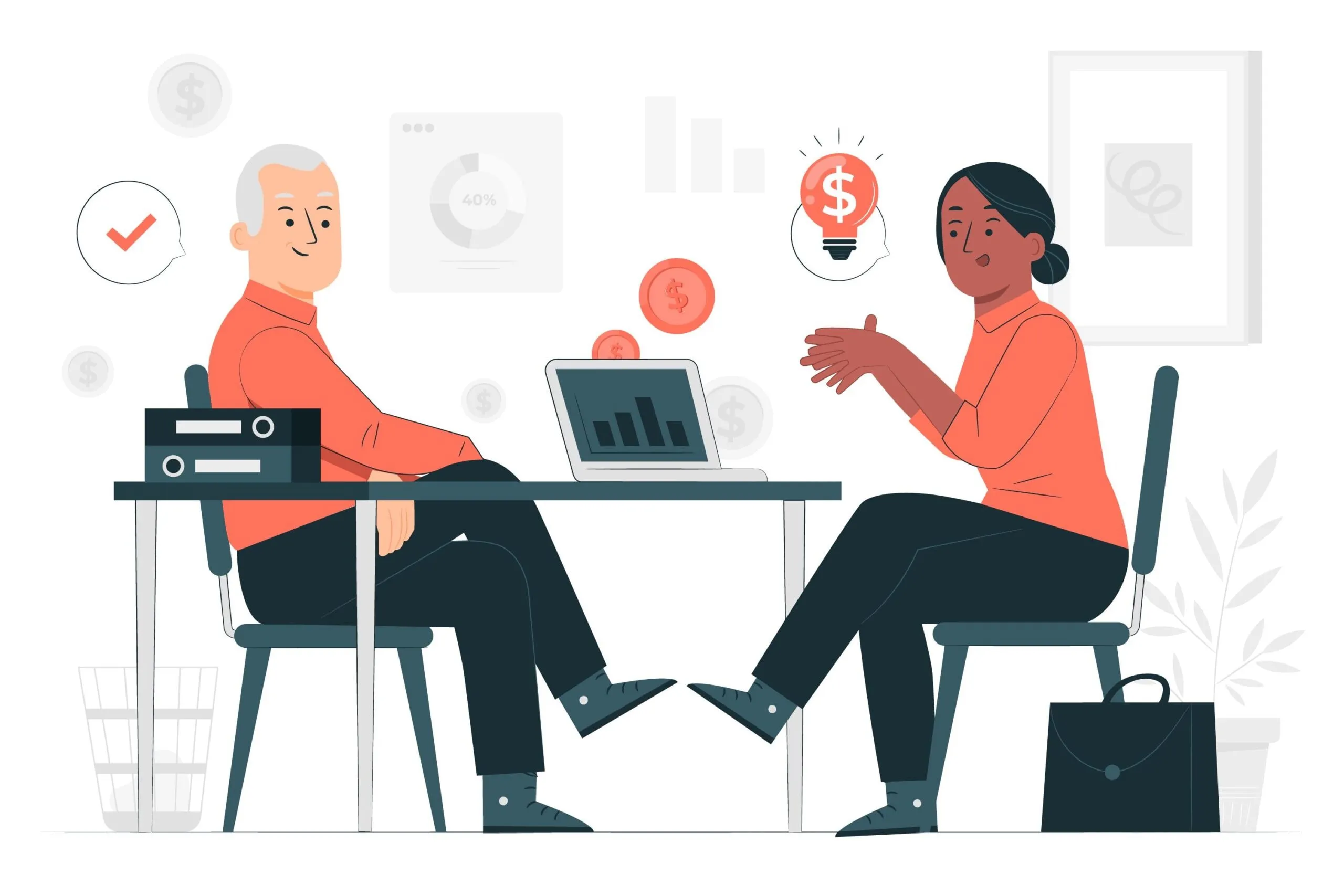
1. Indication of Interest and Engagement
When a prospect raises an objection, it's a sign of interest in your product or service. By listening actively and acknowledging their concerns, you demonstrate your commitment to understanding their needs.
Addressing objections early shows respect for the prospect's viewpoint and builds trust. It sets the stage for a productive conversation where you can clarify doubts and move towards a solution.
Benefits:
- Builds Trust: Showing genuine interest and responsiveness fosters trust and rapport.
- Clarifies Needs: Understanding objections helps tailor your pitch to meet specific needs.
- Positions as a Problem Solver: Demonstrating attentiveness positions you as a proactive problem solver, enhancing your credibility.
2. Clarification of Concerns and Needs
Once objections are talked on other concerns are raised, clarity is key to navigating towards a resolution. Clarify their concerns to understand their needs better and align your solutions accordingly.
Clearing up misunderstandings or uncertainties ensures both parties are on the same page. It lays the groundwork for presenting relevant solutions that address specific pain points.
Benefits:
- Enhances Communication: Clear communication reduces confusion and builds confidence in your proposed solutions.
- Tailors Solutions: Understanding objections allows for personalized solutions that resonate with the prospect's needs.
- Drives Decision-Making: Clarity empowers prospects to make informed decisions, moving closer to a purchase.
3. Opportunity for Education and Value Demonstration
Objections provide an opportunity to educate prospects about your product or service and demonstrate its unique value proposition effectively. Educating prospects positions you as an industry expert and helps them see the tangible benefits of choosing your solution over competitors.
Benefits:
- Builds Authority: Sharing knowledge establishes credibility and positions you as a trusted advisor.
- Differentiates from Competitors: Demonstrating unique value sets your offering apart from alternatives.
- Closes Deals: Providing tailored solutions based on objections increases the likelihood of conversion.
- Educates on Buying Process: Educating prospects about the buying process helps them understand the value of your product or service at each stage, making it easier to overcome objections.
4. Objection Handling as a Differentiator
Objection handling sets top salespeople apart. When you address concerns directly and confidently, you build trust and credibility with potential clients. According to industry data, sales reps who effectively handle sales objections close deals up to 40% more often than those who don’t.
Benefits:
- Differentiation: By adeptly addressing objections, you set yourself apart from competitors.
- Trust Building: It demonstrates your expertise and commitment to understanding customer concerns.
- Increased Conversions: Clearing objections often leads to faster decision-making and higher closing rates.
5. Closing the Sales objections
Closing a sale hinges on how well you handle objections. Once objections are addressed, guide the prospect towards a decision. This step of sales conversation is crucial as it transforms interest into action. Studies indicate that clear, concise communication during this phase increases conversion rates by 20%.
Benefits:
- Sealing the Deal: Effective objection handling paves the way for a smooth transition to closing.
- Commitment: It reinforces the prospect’s confidence in their decision to move forward.
- Advancing the Relationship: Closing opens doors to future opportunities and builds long-term partnerships.
6. Feedback for Continuous Improvement
Continuous improvement is key to sustained success in sales. Soliciting feedback after handling objections and closing sales helps refine your approach and adapt to changing market dynamics.
Sales teams that regularly review and adjust their strategies achieve 30% higher revenue growth year over year.
Benefits:
- Learning Opportunities: Each objection handled provides insights into customer needs and objections.
- Iterative Improvement: Use feedback to enhance product offerings or sales strategies.
- Adaptability: Continuous improvement based on feedback ensures you stay responsive to market changes.
How To Use AI Tools To Overcome Common Sales Objections
1. AI-Powered Insights and Analytics
Utilize AI to analyze sales objections data and identify trends. Leverage AI algorithms for overcoming sales objections by predicting and handling sales objections based on historical data.
Salesforce Einstein Analytics

Salesforce Einstein Analytics uses data to predict customer behaviors and preferences, helping sales teams anticipate objections before they arise.
It provides insights through easy-to-understand charts and graphs, making it simpler for the sales team and reps to adjust their strategies in real-time. Examples: Predicting pricing objections based on previous customer interactions.
Tableau
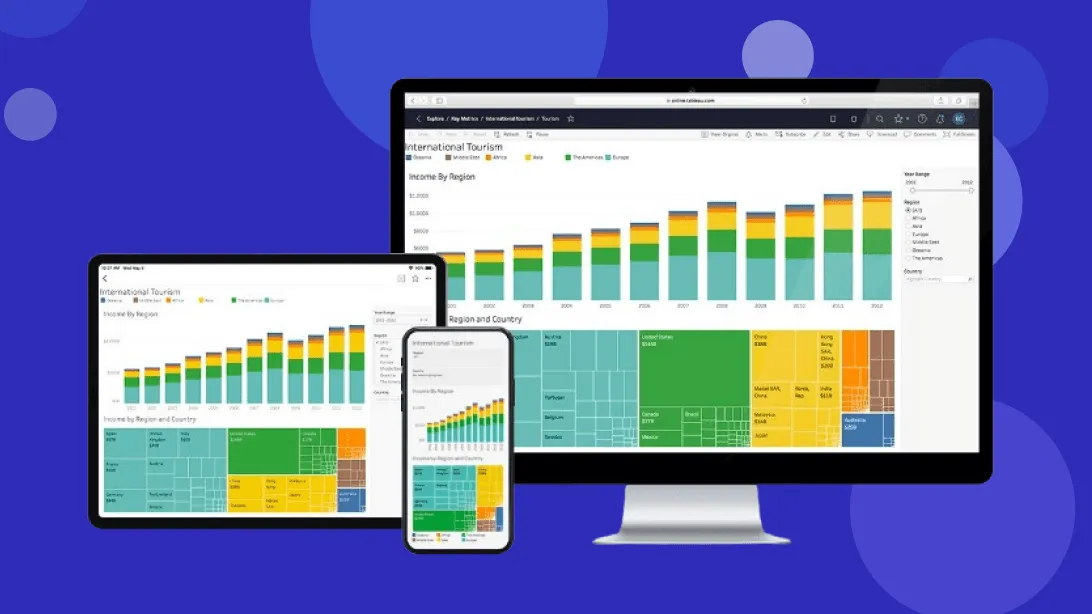
Tableau visualizes data in interactive dashboards, allowing sales teams to quickly spot objections and understand their root causes.
It empowers sales reps with actionable insights, enabling them to tailor their approaches and resolve objections effectively.
2.Chatbots and Virtual Assistants for Immediate Responses
Implement AI-powered chatbots to address most common sales objections instantly. Use virtual assistants equipped with natural language processing to handle objections effectively. Example: Chatbots providing instant responses to pricing inquiries or product feature questions.
Drift
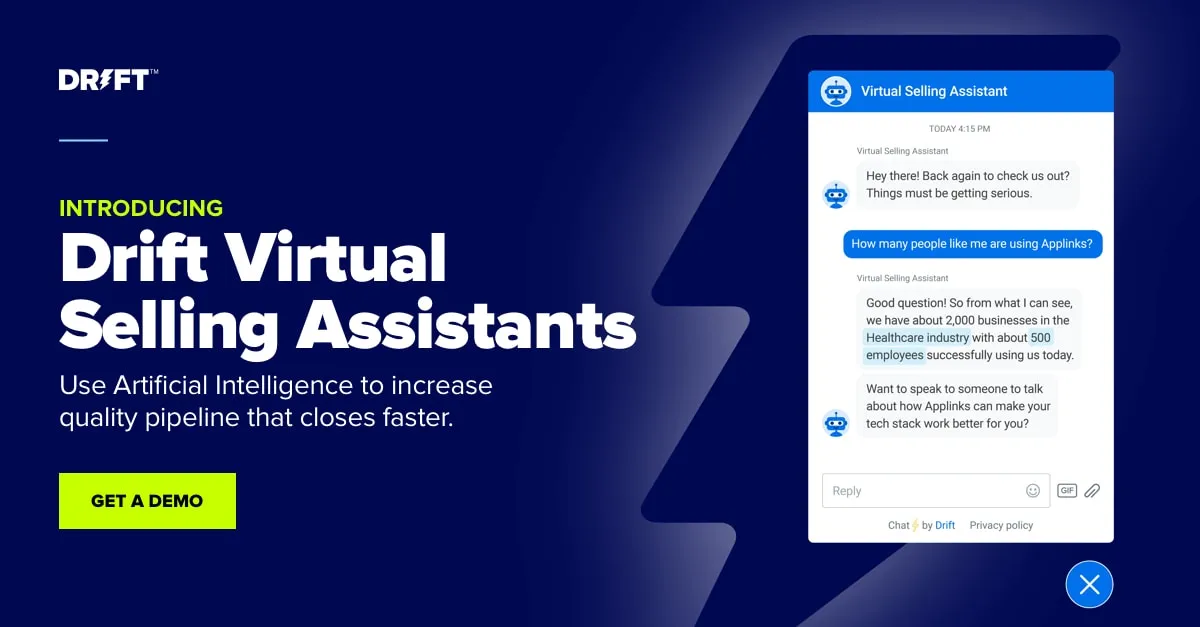
Drift's chatbots engage with website visitors in real-time, answering questions and addressing objections instantly.
They use AI to understand customer needs and guide them towards solutions, enhancing the sales process.
X.ai
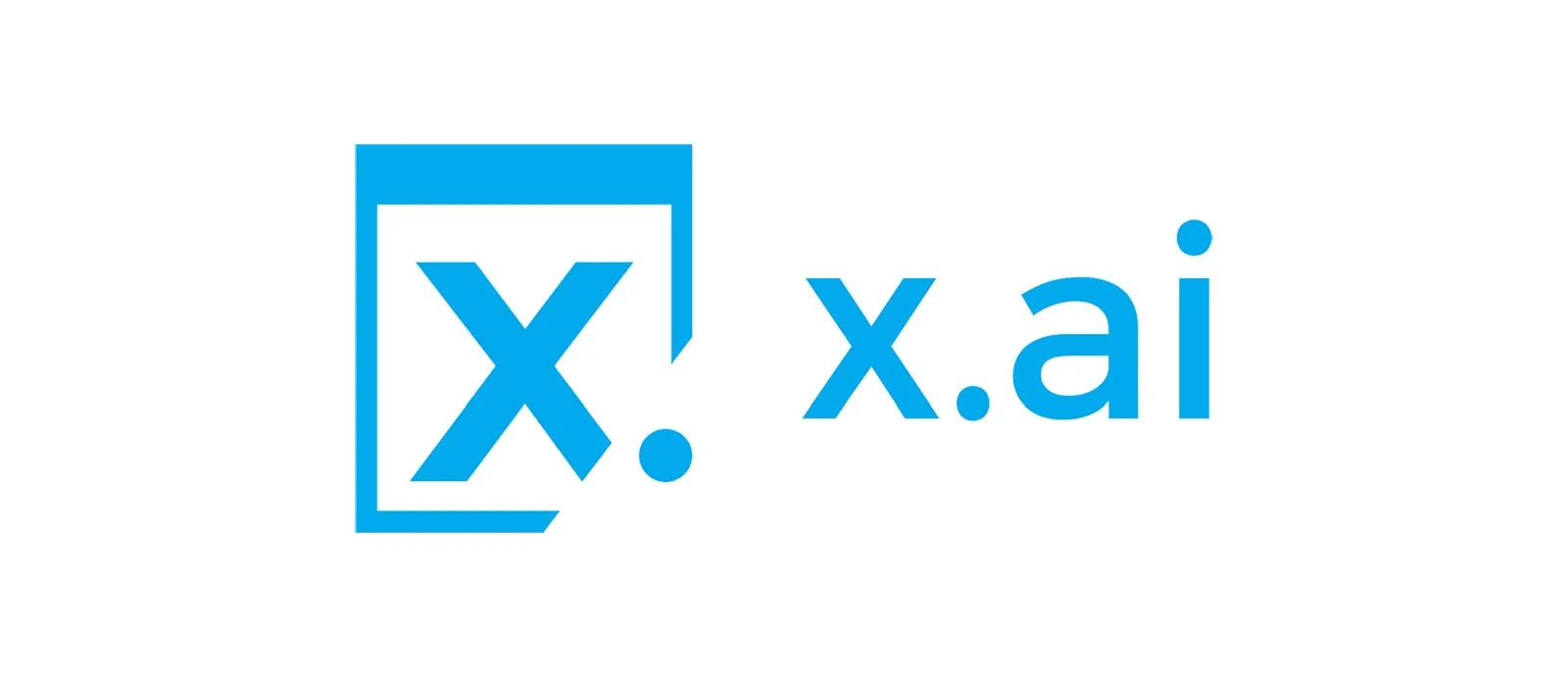
X.ai's virtual assistants schedule meetings and handle objections related to timing and availability.
They streamline communication by automating scheduling tasks, freeing up sales reps to focus on closing deals.
Bold360

Bold360's chatbots provide immediate responses to common objections through personalized interactions.
They use AI to learn from customer interactions, improving their ability to handle objections effectively over time.
3. Personalized Recommendations and Solutions
Deploy AI for generating personalized recommendations tailored to prospect's concerns. Utilize AI to suggest solutions based on individual objections and preferences. Example: Recommending specific product features based on customer needs or objections.
Dynamic Yield

Dynamic Yield uses AI to analyze customer behavior and preferences in real-time.
It provides personalized product recommendations based on these insights, addressing objections related to relevance and suitability.
For example, it can suggest alternative products or upgrades based on customer browsing history, increasing the likelihood of a sale.
Salesforce Einstein
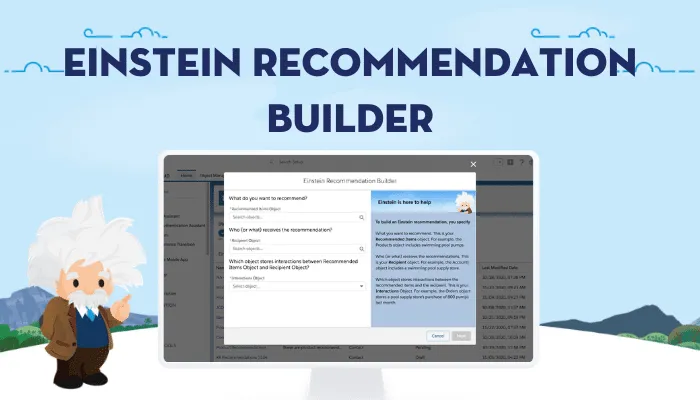
Salesforce Einstein analyzes customer data to deliver personalized recommendations.
It predicts customer preferences and behavior, helping sales teams tailor their offers to match individual needs.
By presenting relevant solutions upfront, it minimizes objections related to product fit or value.
Acquia Lift

Acquia Lift integrates customer data from multiple channels to create personalized experiences.
It offers tailored content and product recommendations that resonate with each prospect.
This approach addresses objections by showing prospects solutions that align closely with their specific requirements or pain point.
4. Sentiment Analysis for Emotional Insights
Apply AI-driven sentiment analysis to understand emotional cues behind objections. Use emotional insights to respond empathetically and build rapport with prospects. Example: Detecting skepticism through sentiment analysis and addressing concerns with empathy.
IBM Watson Natural Language Understanding

IBM Watson analyzes text to identify sentiment and emotional cues from customer interactions.
It categorizes sentiments as positive, negative, or neutral, providing insights into customer attitudes and concerns.
By understanding sentiment, sales teams can tailor responses and solutions to address objections effectively, fostering better rapport and trust.
MonkeyLearn
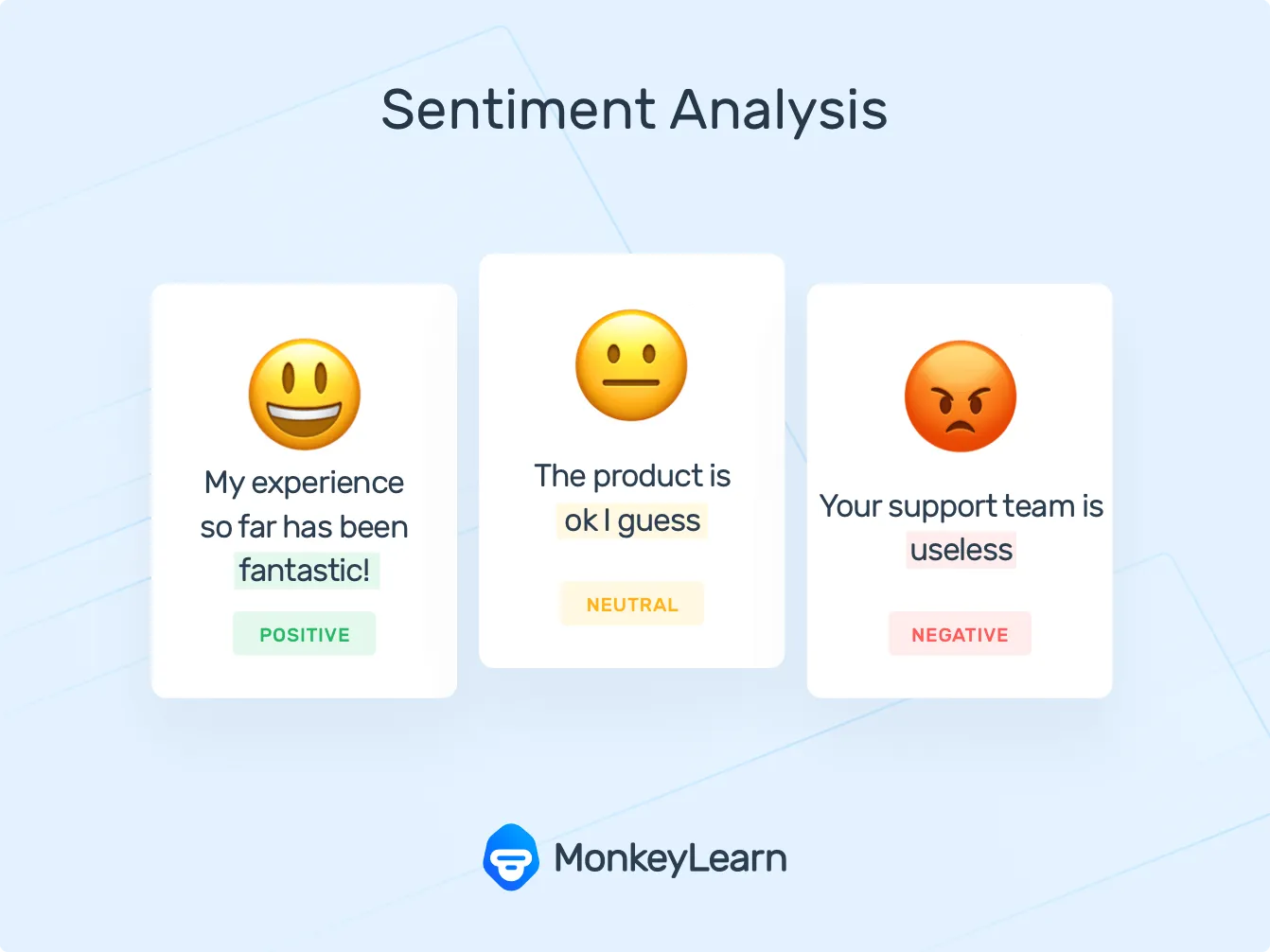
MonkeyLearn offers customizable sentiment analysis models that interpret text data.
It classifies customer feedback and communications into sentiment categories, such as satisfaction or dissatisfaction.
This tool helps sales reps gauge customer sentiment quickly, allowing them to adjust their approach to alleviate objections and build stronger relationships.
Lexalytics

Lexalytics employs advanced natural language processing to analyze sentiment across various data sources.
It identifies emotional insights and trends from customer feedback, social media, and other text-based interactions.
By uncovering underlying emotions and concerns, sales teams can address objections more empathetically and proactively, enhancing customer engagement and loyalty.
Conclusion
Objections provide opportunities to learn more about clients' demands and provide solutions that meet them. Develop trust and complete more business by listening effectively, boldly responding to concerns, and demonstrating how your product or service addresses their problems.
To get better at what you do and gain knowledge from every encounter, keep practicing. Use these strategies to overcome obstacles and meet your sales targets.









